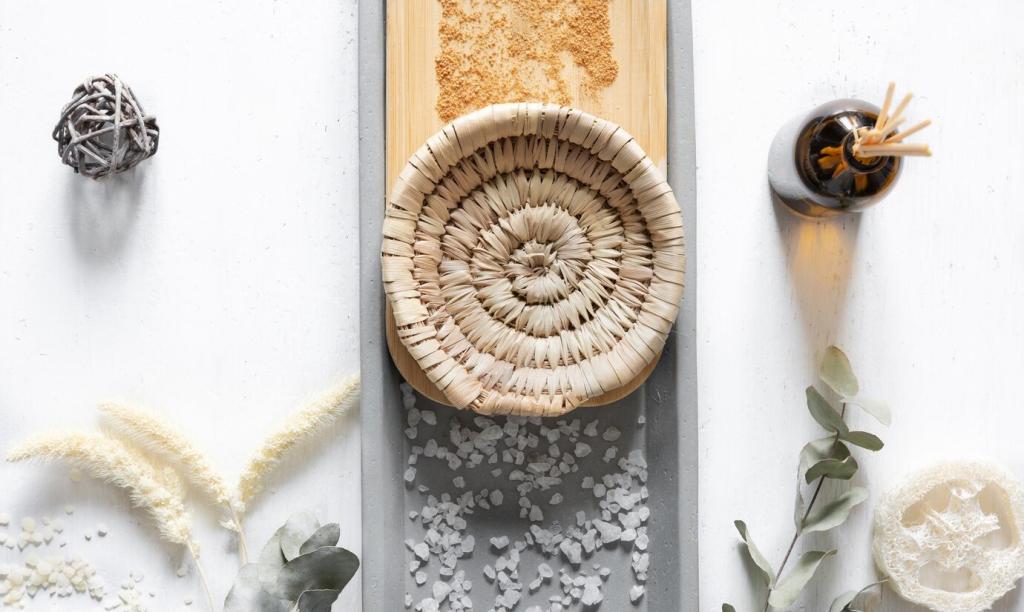Incorporating Green Practices in Interior Design
Embracing green practices in interior design is more important than ever in today’s environmentally conscious world. Sustainable design not only benefits the planet but also enhances indoor air quality, boosts well-being, and creates spaces that are both stylish and responsible. This web page explores practical strategies for integrating eco-friendly ideas into your interiors, covering everything from material selection to energy efficiency and healthy living.

Sustainable Material Choices
Reclaimed and Recycled Materials
Choosing reclaimed or recycled materials, such as wood, glass, and metals, significantly reduces demand for new raw materials. Reclaimed wood, for instance, lends unique character to interiors while saving trees and reducing landfill waste. Recycled glass tiles or metals provide attractive, durable options that require less energy to produce than virgin materials. Incorporating such materials adds a story and a sense of authenticity to design, demonstrating that eco-conscious choices can be both beautiful and meaningful.
Low-Impact Finishes and Paints
Volatile organic compounds (VOCs) and other chemicals found in traditional paints and finishes can harm indoor air quality and contribute to pollution. Opting for low-VOC or natural finishes helps improve the health of the indoor environment while reducing adverse environmental impacts. These products now come in a wide array of colors and finishes, allowing for creative freedom without sacrificing wellness. By prioritizing low-impact options, designers can create spaces that are safer and healthier for occupants of all ages.
Rapidly Renewable Materials
Utilizing rapidly renewable resources like bamboo, cork, or linoleum supports a cradle-to-cradle approach in design. These materials regenerate much faster than traditional hardwoods and often require fewer pesticides and fertilizers during cultivation. Bamboo flooring and cork wall coverings, for example, offer durability and style, suited to modern interiors. Incorporating rapidly renewable materials demonstrates a commitment to resource conservation and long-term environmental responsibility within living and working spaces.
Energy Efficiency in Design
Strategically maximizing the use of daylight is a cornerstone of energy-efficient interior design. Properly placed windows, skylights, and glass doors usher in natural light, which reduces the need for artificial lighting during the day. Utilizing reflective surfaces and light colors for walls and ceilings can further distribute daylight throughout the space. This not only saves energy but also creates uplifting, vibrant interiors that support the occupants’ well-being and productivity.
Implementing smart lighting solutions, such as LED fixtures and automated controls, minimizes electricity consumption while providing superior light quality. LED bulbs use significantly less energy and last much longer than traditional incandescent options. Motion sensors and programmable dimmers ensure that lights are only used when necessary, tailoring illumination to specific needs. These technologies enable designers and residents to effortlessly maintain efficiency without sacrificing comfort or functionality in the living environment.
Good insulation and thoughtful thermal regulation are key elements in maintaining comfortable indoor temperatures year-round while reducing energy consumption. Using eco-friendly insulation materials, high-performance windows, and thermal curtains can significantly improve a building’s energy profile. These choices keep interiors warm in winter and cool in summer, decreasing reliance on heating and cooling systems. Effective thermal management leads to both financial savings and a lower environmental footprint, exemplifying sustainable design at its best.
Indoor Air Quality and Health
Integrating live plants within interior spaces offers multiple wellness benefits, from improving air quality to enhancing mood and productivity. Certain plants naturally filter pollutants, such as formaldehyde and benzene, from the air, while adding vibrancy and life to any room. Biophilic design, which seeks to connect people with nature, is increasingly popular for its positive impact on mental health and creativity. Thoughtfully selected plants can also serve as natural humidifiers and sound absorbers, making indoor environments more comfortable and inviting.

